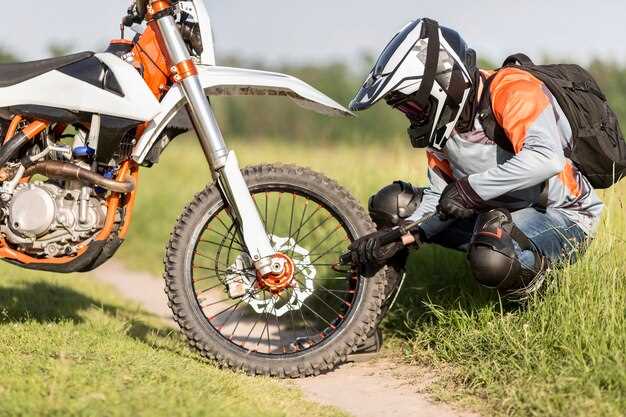
Dual-sport motorcycles represent a unique blend of versatility and rugged design, catering to riders who crave both street and off-road adventures. These machines are engineered to traverse various terrains, making them ideal for those who seek excitement beyond the urban landscape. With a dual-sport motorcycle, enthusiasts can seamlessly transition from asphalt to trails, experiencing the freedom of the open road and the thrill of untamed paths.
One of the standout features of dual-sport motorcycles is their lightweight construction, which provides enhanced maneuverability, especially on challenging off-road surfaces. This characteristic is complemented by high ground clearance and long suspension travel, allowing these bikes to absorb bumps and obstacles found in nature. Additionally, dual-sport motorcycles often come equipped with aggressive tires that ensure superior traction and stability, whether riding on rocky trails or muddy tracks.
Beyond the physical attributes, the benefits of owning a dual-sport motorcycle extend to practicality and cost-effectiveness. Riders can save on fuel and maintenance costs while enjoying the flexibility of using one bike for multiple purposes. This versatility makes dual-sport motorcycles an appealing choice for those looking to embark on long-distance journeys or quick weekend getaways, blending the best of both worlds in one capable package.
Key Specifications that Define Dual-Sport Motorcycles
Dual-sport motorcycles are designed to excel in both on-road and off-road conditions, making them an attractive option for versatile riders. Understanding their key specifications can help you choose the right bike for your needs.
Engine Capacity: Typically ranging from 250cc to 1200cc, engine capacity influences both performance and weight. Smaller engines are lighter and more manageable for off-road riding, while larger engines provide better highway performance and long-distance capabilities.
Weight: The weight of a dual-sport motorcycle is crucial for off-road maneuverability. Most bikes weigh between 300 to 450 pounds. Lighter models offer easier handling on rough terrain, while heavier models may provide stability and comfort on highways.
Suspension Travel: Off-road riding demands superior suspension capabilities. Dual-sport motorcycles often feature long travel suspension systems, typically between 7 to 11 inches. This allows for better absorption of bumps and obstacles, enhancing rider control on uneven surfaces.
Tire Type: Dual-sport motorcycles are fitted with tires that are versatile enough for both paved and unpaved roads. These tires often have a knobby tread pattern for off-road grip while maintaining sufficient traction for highway use. The correct tire pressure is essential for optimal performance in different environments.
Fuel Capacity: Longer rides on varied terrain require ample fuel storage. Dual-sport models often come with fuel tanks ranging from 2.5 to 6 gallons, providing a balance between weight and range. Larger tanks reduce the frequency of refueling during off-road adventures.
Seat Height: A seat height of approximately 30 to 37 inches is common in dual-sport motorcycles. The proper seat height allows riders to maintain stability and comfort during challenging off-road conditions while providing confidence in urban riding.
Braking System: Effective braking is crucial for safety, especially on rugged terrain. Many dual-sport bikes are equipped with disc brakes, providing superior stopping power and control compared to traditional drum brakes. Some models offer anti-lock braking systems (ABS) for additional safety on slippery surfaces.
By considering these specifications, riders can better understand the capabilities of dual-sport motorcycles, ensuring they select a model that matches their riding style and adventure aspirations.
Off-Road Capability and Outdoor Adventures

Dual-sport motorcycles are designed to excel in diverse terrains, making them the perfect choice for off-road enthusiasts and adventure seekers. These bikes bridge the gap between on-road commuting and off-road exploration, offering versatility and ruggedness.
One of the primary features contributing to their off-road capability is their lightweight frame. This design allows for easier maneuverability on rough trails, rocky paths, and uneven surfaces. The suspension systems are typically built to absorb shocks and bumps, ensuring a smoother ride even in challenging conditions.
Off-road tires are another essential element, providing enhanced traction and stability on loose surfaces like dirt, gravel, and mud. The tread patterns on these tires are designed to dig into the terrain, allowing riders to maintain control and navigate obstacles confidently.
Additionally, many dual-sport motorcycles come equipped with long-travel suspension systems. This feature not only improves ride comfort but also enhances performance over rugged landscapes, enabling riders to tackle steep inclines and descents with ease.
For outdoor adventures, the ability to carry gear is crucial. Dual-sport motorcycles often have mounting options for luggage racks, panniers, and other accessories, making it convenient to pack essential supplies for extended trips into nature. This capability encourages exploration of remote areas that may be inaccessible by car.
Moreover, the ergonomics of dual-sport motorcycles are designed for prolonged riding comfort. A comfortable seat and an upright riding position help reduce fatigue during long off-road journeys, allowing riders to fully enjoy their adventures.
In summary, the off-road capability of dual-sport motorcycles opens up a world of outdoor adventures. From tackling rough trails to exploring remote landscapes, these versatile machines provide the ideal blend of performance, comfort, and adaptability for any off-road enthusiast.
Maintenance Tips for Long-lasting Performance and Safety

Regular maintenance is crucial for ensuring the longevity and reliability of your dual-sport motorcycle, especially when it’s frequently used in diverse off-road conditions. Here are essential tips to keep your bike performing at its best.
1. Regular Oil Changes: Change the engine oil and filter regularly, following the manufacturer’s recommendations. Clean oil is vital for lubrication, especially during off-road rides where dust and debris can contaminate it.
2. Tire Care: Inspect tire pressure and tread depth regularly. Off-road terrain can wear tires unevenly, so ensure they are suitable for different surfaces. Rotate tires as necessary to promote even wear.
3. Chain Maintenance: Keep the drive chain clean, lubricated, and properly adjusted. Off-road riding can lead to mud and grime buildup, which can affect chain performance and longevity.
4. Brake Inspection: Check brake pads and fluid levels frequently. Off-road conditions may cause brakes to wear faster. Ensure that all components are in good working order to maintain safety during rides.
5. Air Filter Cleaning: Clean and replace the air filter as needed, particularly after riding in dusty or muddy environments. A clean air filter ensures optimal engine performance and helps prevent damage from dirt ingestion.
6. Suspension Checks: Regularly inspect and adjust the suspension settings based on your riding style and conditions. Off-road riding requires proper suspension setup to absorb impacts and improve handling.
7. Electrical System Inspection: Examine your motorcycle’s electrical components, including the battery and connections. Off-road conditions may expose wiring to damages, so ensure everything is functioning properly to avoid breakdowns.
8. Regularly Tighten Bolts and Fasteners: Vibration from off-road rides can loosen bolts and screws. Check and tighten all critical parts regularly to avoid mechanical failures.
9. Winter Storage: If not in use, prepare your motorcycle for storage by cleaning it thoroughly, topping off fluids, and storing it in a dry, secure place. This prevents corrosion and maintains its condition over time.
10. Professional Servicing: Schedule regular professional maintenance to address any expert concerns that may not be visible during DIY checks. This is essential for ensuring your motorcycle’s overall health and performance.
By following these maintenance tips, you can enhance your dual-sport motorcycle’s performance and safety, ensuring that it remains reliable for both on-road and off-road adventures.












